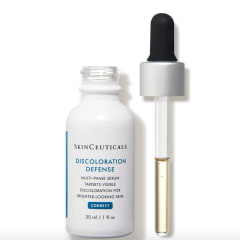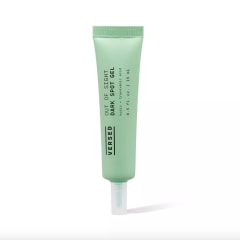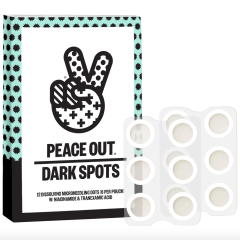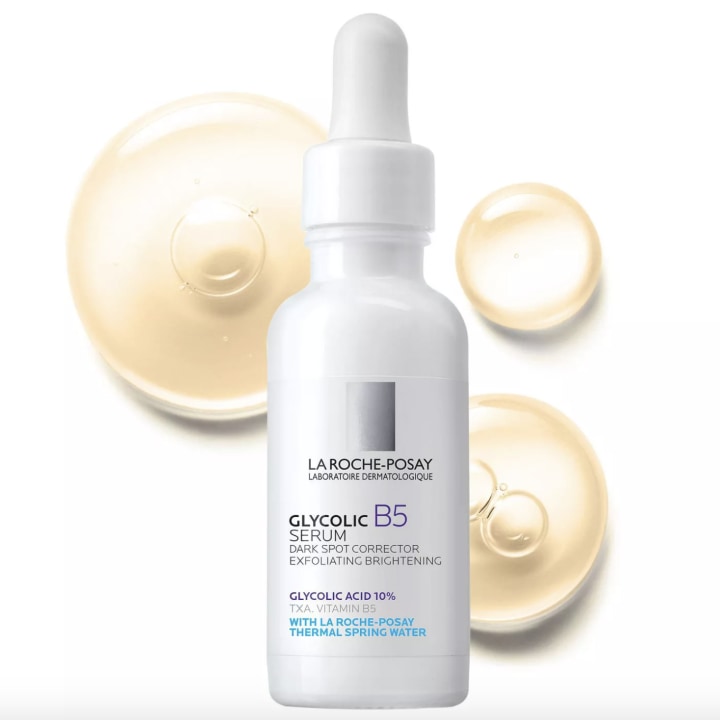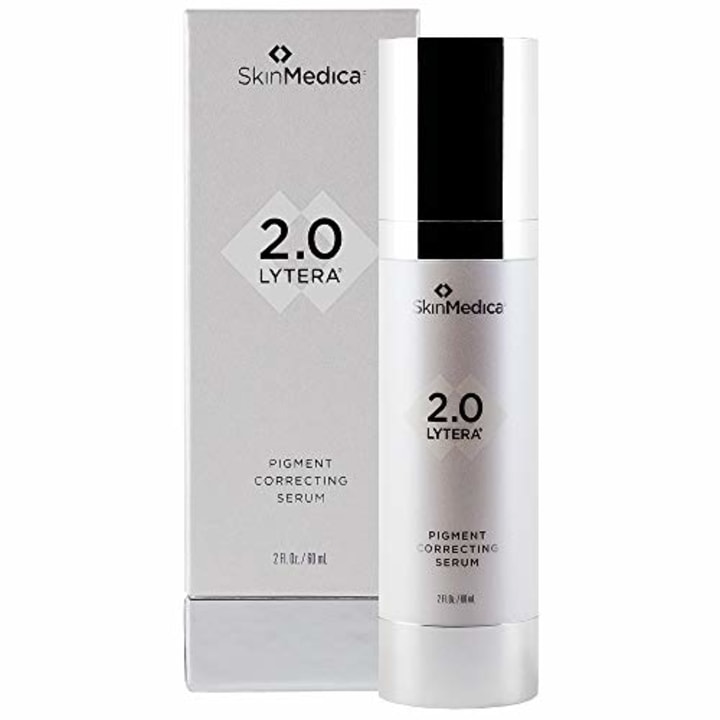As hard we may try to prevent things like breakouts or sunburns from happening, sometimes they're inevitable. So when they do appear, you can usually take solace in the fact they'll fade and your skin will be back to normal within a few days. But that's not always the case — sometimes they stick around for much longer than expected, leaving lasting marks on your complexion.
These dark spots and areas of hyperpigmentation are all too common, especially for those with darker skin tones. And to treat them, people typically turn to a brightening serum or spot treatment. But if you've tried out a new product lately, you may have noticed an unfamiliar ingredient getting top billing on the label along with classic brightening heroes like vitamin C or niacinamide.
Tranexamic acid, a newcomer to the beauty scene, has been popping up in a range of formulas. And while its name may seem a little intimidating, it's actually an expert-approved solution for melasma and hyperpigmentation.
What is tranexamic acid? | What are the benefits? | Are there any risks? | Products to shop with tranexamic acid | How we chose | Meet the experts
What is tranexamic acid?
Originally, tranexamic acid was prescribed as an oral treatment to help control bleeding, says Dr. Ranella Hirsch, a Boston-based board-certified dermatologist. But more recently, it’s been explored as a topical treatment for hyperpigmentation and similar skin conditions.
Unlike our other favorite skin care acids, like the salicylic or glycolic varieties, tranexamic acid is not an exfoliant. It’s derived from the essential amino acid lysine, which slows melanin synthesis, says Dr. Debra Jaliman, a board-certified dermatologist in New York City.
What are the benefits?
If you're looking for a skin care ingredient to help reduce your dark spots or struggling with acne, products with tranexamic acid are a great option and offer many benefits.
Essentially, it works by blocking the interaction between the melanocytes, which are the cells that make melanin (responsible for skin pigment) and the keratinocytes, the surface skin cells, Jaliman says. As a result, it can help lighten areas of discoloration and melasma.
One 2019 study found that a 5% tranexamic acid solution was as effective at treating the latter as a hydroquinone cream, the "gold standard" treatment for the condition.
Are there any risks?
Most of its potential side effects come into play when you're taking tranexamic acid orally, so it's a pretty safe ingredient that pairs well with other popular skin care additives.
Something that's important to note: If you're not using proper sun protection, this is pretty much all for naught. "Sunscreen is just as, if not more, important in treating hyperpigmentation," Hirsch says. She suggests applying sunscreen in the morning (yes, even on those gloomy fall and winter days) and then using a tranexamic acid product as a part of your nightly skin care routine. When used topically, it can take around six to eight weeks of regular use before you start seeing results.
If you want to give it a try, we asked the experts to share their recommendations for products that feature the ingredient.
The best tranexamic acid products, according to experts
Versed Out of Sight Dark Spot Gel
- Erases dark lines
- Targets worst areas
- Small in size
Size: 0.5 fl oz | Formula: Gel
Tackling hyperpigmentation can be tricky, which is why Hirsch typically recommends products that feature other active ingredients in addition to tranexamic acid, to tackle multiple pigmentation production pathways. She likes this affordable Dark Spot Gel from Versed, which contains brightening kojic acid and niacinamide, which can help support the skin barrier and inhibit pigment-producing enzymes.
Peace Out Microneedling Dark Spot Brightening Dots
- Successfully targets blemishes
- Pain-free
- Great for sun spots
- Can cause reaction
Size: 12-pack | Formula: Patches
For a targeted spot treatment, Jaliman likes these patches from Peace Out. Each dot contains 430 microneedles (don't worry, they don't hurt) that deliver the tranexamic acid and niacinamide to your skin. For best results, you should wear them for up to six hours — just put them on before bed and you'll be good to go.
La Roche-Posay Glycolic B5 Dark Spot Corrector
- Successfully treats spots
- Smoothens skin
- Brightens skin
- Product can leak
Size: 1.0 fl oz | Formula: Serum
This dark spot corrector contains tranexamic acid along with kojic and glycolic acids, Jaliman says. It's suitable for those with sensitive skin and is free from oils, parabens and fragrances.
SkinCeuticals Discoloration Defense
- Dramatic results
- Keeps skin bright and fresh
- May be thick
Size: 1.0 fl oz | Formula: Serum
Both experts named SkinCeuticals’ Discoloration Defense serum as one of their top picks. It contains a blend of discoloration-targeting ingredients like tranexamic acid, niacinamide and kojic acid to help reduce the appearance of stubborn dark spots and improve the overall brightness of skin.
SkinMedica Lytera 2.0 Pigment Correcting Serum
- Removes dark circles under eye
- Reduces sun spots
- Pricey
Size: 2.0 fl oz | Formula: Serum
Jaliman also recommends The SkinMedica Lyterra 2.0 Pigment Correcting Serum. Not only does it fight current discoloration, but according to the brand, it will also help prevent future spots from forming. Certain reviewers have said that they noticed a difference in their skin after just a few weeks of use.
How we chose products with tranexamic acid
The Shop TODAY team rounded up the best products with tranexamic acid with the help of board-certified dermatologists from Boston and New York City who provided expert recommendations.
Meet the experts
- Dr. Ranella Hirsch, MD, FAAD is a Boston-based board-certified dermatologist.
- Dr. Debra Jaliman, MD is a board-certified dermatologist in New York City.

